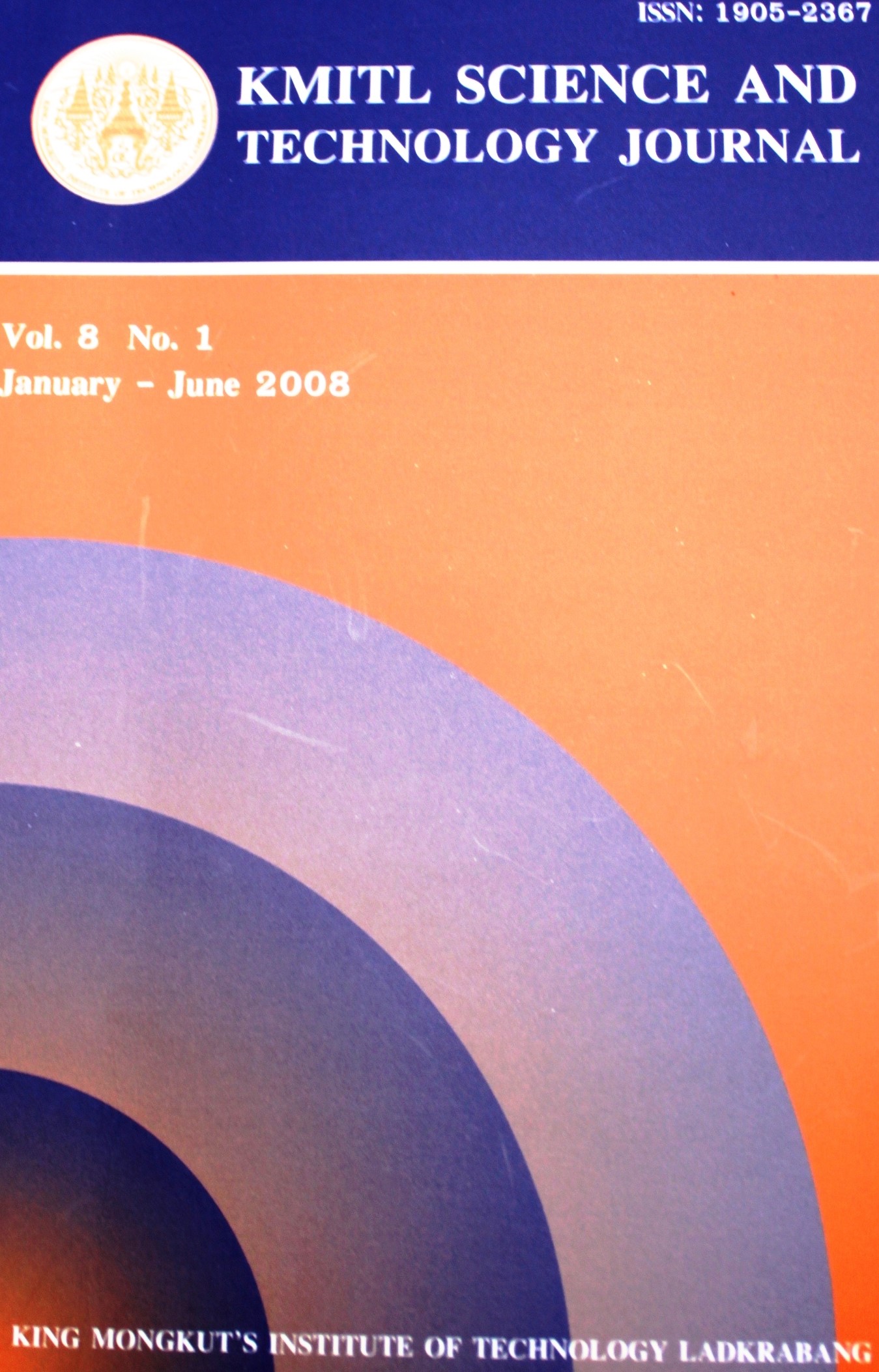Screening of Rhizobacteria for Their Plant Growth Promoting Activities
Main Article Content
Abstract
Rhizospheric bacteria are known to influence plant growth by direct and indirect mechanisms. A total of 220 phosphate solubilizing bacteria were isolated from different rhizosphere soil in Northern part of Thailand. These isolates were screened for their plant growth promoting factors like production of ammonia, siderophore and cell wall degrading enzyme activities; cellulase, chitinase and proteolytic enzyme. More than 64% of the isolates produced ammonia and 23% produced siderophore on chrome azurole S agar plates. Moreover, test isolates produced cell wall degrading enzyme; cellulose (6%), chitinase (6%) and proteolytic enzyme (5%) on agar plate
method. The results show that rhizospheric phosphate utilizing bacteria could be a promising source for plant growth promoting agent in agriculture.
KEYWORD: rhizospheric bacteria, plant growth promoting trails, phosphate solubilizing bacteria
E-mail: scboi009@chiangmai.ac.th
Article Details
Copyright Transfer Statement
The copyright of this article is transferred to Current Applied Science and Technology journal with effect if and when the article is accepted for publication. The copyright transfer covers the exclusive right to reproduce and distribute the article, including reprints, translations, photographic reproductions, electronic form (offline, online) or any other reproductions of similar nature.
The author warrants that this contribution is original and that he/she has full power to make this grant. The author signs for and accepts responsibility for releasing this material on behalf of any and all co-authors.
Here is the link for download: Copyright transfer form.pdf
References
[2] Kim, K.Y., Jordan, D. and Mc. Donald, G.A. 1998 Enterobacter agglomerans , Phosphate Solubilizing Bacteria and Microbial Activity in Soil: Effect of Carbon Source. Soil Science Society of America, 30, 995-1003.
[3] Glick, B. R., Karaturovic, D.M. and Newell, P.C. 1995 A Novel Procedure for Rapid Isolation of Plant Growth Promoting Pseudomonas, Cannada Journal of Microbiological,41, 533-536.
[4] Kucey, R. M. N., Janzen, H. H. and Leggett, M. E. 1989 Microbiologically Mediated Increases in Plant–Available Phosphorus. Advances in Agronomy, 42, 199-228.
[5] Nautiyal, S.C. 1999 An Efficient Microbiological Growth Medium for Screening Phosphate Solubilizing Microorganisms. Microbiology Letters, 170, 265-270.
[6] Cappucino, J.C. and Sherman, N. 1992 In: Microbiology: A Laboratory Manual. 3rd ed. New York: Benjamin / Cumming Pub. Co.
[7] Clark, V. L. and Bavoil, P.M. 1994 Methods in Enzymology. London: Academic Press.
[8] Cattelan, M.E., Hartel, P.G. and Fuhrmann, J.J. 1999 Screening of Plant Growth-Promoting Rhizobacteria to Promote Early Soybean Growth, Soil Science Society of America, 63,1670- 1680.
[9] Gurinot, M.L. 1994 Microbial Iron Transport. Annual Review of Microbiology. London: Academic Press.
[10] Nagrajkumar, M., Bhaskaran, R. and Velazhahan, R. 2004 Involvement of Secondary Metabolites and Extracellular Lytic Enzymes Produced by Pseudomonas fluorescens in inhibition of Rhizoctonia solani, the Rice Sheath of Blight Pathogen, Microbiological Research, 159, 73-81.
[11] Farah, A., Iqbal, A. and Khan, M.S. 2006 Screening of Free-Living Rhizospheric Bacteria for Their Multiple Plant Growth Promoting Activity, Microbiological Research, 163, 173-181.


